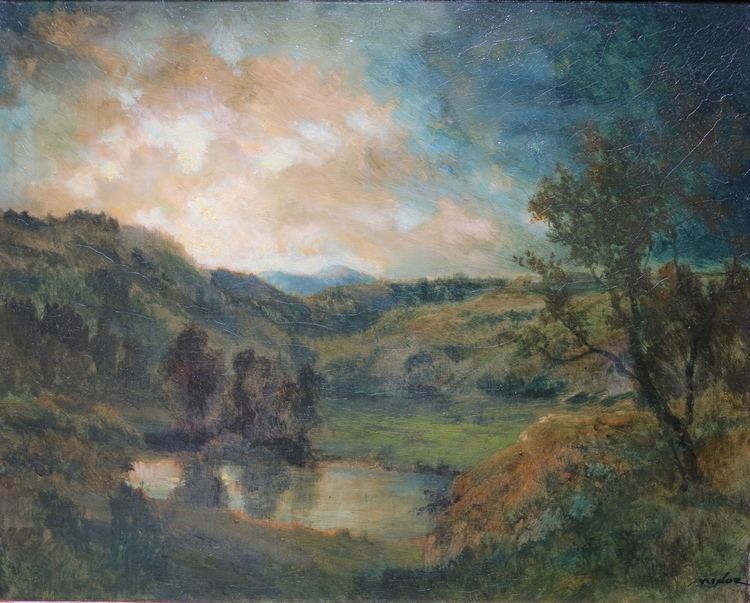Nationality American Spouse(s) Isabel A. Minor | Name Robert Minor Role Artist | |
 | ||
Study by m francis mccarthy of on the heights by robert crannell minor
Robert Crannell Minor (1839-1904), American artist, was born in New York City on 30 April 1839. His father, Israel Minor, was a merchant who made a large fortune in the pharmaceutical business. As a young man, Robert Minor worked as a bookkeeper in New York City but decided to study art in his early thirties. After studying in New York with painter Alfred Cornelius Howland, Minor went abroad in 1871 to continue his artistic education. He visited various galleries in England before traveling to Barbizon, France, where he studied under Diaz. He later studied in Antwerp under Joseph Van Luppen and Hippolyte Boulenger. In 1874, he was vice president of the Société artistique et littéraire of Antwerp.
Contents
On his return to the United States in 1874, he opened a studio in New York. He painted for many years out of his studio in the Old University Building of New York University. Painting in the Adirondack Mountains and later in Waterford, Connecticut, Minor soon became known for his landscapes resembling the Barbizon School. Under the influence of George Inness and Alexander Helwig Wyant, he also began to paint in a Tonalist style. His painting Great Silas at Night (1890) displays his adoption of the Tonalist style while his lingering Barbizon style can be seen in A Hillside Pasture. From the 1890s until his death, Minor exhibited frequently with the Tonalists in New York. In 1897, he was elected a member of the National Academy of Design, New York. In 1900, Minor achieved the height of his success at the Evans sale, where his painting The Close of Day fetched $3,050. This painting is currently unlocated.
Over the course of his lifetime, Minor was a member of the Society of American Artists and the Salmagundi Club. He exhibited in New York, Brooklyn, Chicago, and elsewhere in the United States, as well as in the Royal Academy of London and the salons of Paris and Antwerp. Minor was plagued with bad health during the last decade of his life, decreasing the quantity and likely the quality of his works. He died at his home in Waterford, Connecticut, on 4 August 1904. His paintings are owned by the Smithsonian American Art Museum, the Yale University Art Gallery, the Mead Art Museum, the Lyman Allyn Museum, the Florence Griswold Museum, the Brooklyn Museum, the Newark Museum of Art, the Robert Hull Fleming Museum, the Haggin Museum, the Salmagundi Club, the Memorial Art Gallery, and the University of Arizona Museum of Art.
Work
His paintings are characteristic of the Barbizon school and Tonalism, and he was particularly happy in his sunset and twilight effects; but it was only within a few years of his death that he began to have a vogue among collectors. Among his works are:
